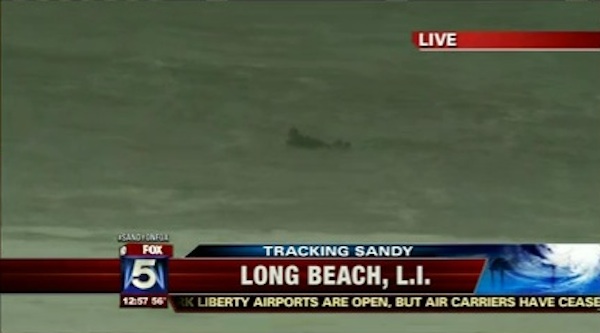East coast residents surf Sandy

Throwing caution to the wind, some avid surfers clamored to the shorelines to catch major swells induced by superstorm Sandy.
December 3, 2012
When the residents of the Eastern seaboard leaned about a potential hurricane (known as Sandy) hitting the coast with devastating force, they panicked and bought large quantities of water, non-perishable food items, and generators hoping that their homes would not be lost.
Yet while the majority was preparing to be stuck indoors, pockets of surfers up-and-down the coast were planning the opposite; they were preparing to go out. New Jersey surfers, like Dean Randazzo, were picking out boards, fins, surf spots, and watching the swell approach. The people that hear about or see surfers paddling out into double or even triple overhead waves wonder what type of person would selfishly risk his/her life and endanger a bystander who would try to save them.
It’s not entirely true that the surfers that go out during these storm events are experienced and mentally prepared to surf a wave of a larger scale than normal. Typical fall swells (swell meaning waves produced by energy traveling through the ocean) produce waves around 6-8ft. The waves that the surfers were actually facing were around 17-20 feet in height.
The surfers that went out were mainly Jersey professionals (such as Mike Gleason, Dean Randazzo) and some photographers, looking for some good waves and pictures for sponsors. The surfers were looking for the thrill of surfing some of Jersey’s biggest waves and sharing it on the cover of Surfer magazine.
What did these surfers have to do in order prepare themselves? There is more to it than just paddling out into a storm: surfers watch the swell charts looking for the right condition to come together. These conditions determine what makes these waves rideable. They include wind direction, weather onshore or offshore, and swell direction.
Hurricane Sandy stoked a lot of surfers, but at the same time it brought misery to them like everyone else. The superstorm destroyed piers that generate makeshift point breaks and eroded the sand to the point in which waves don’t break the same way as they did prior to the storm. Even the surfers who wait for storms like these still deal with the aftermath like everyone else.



